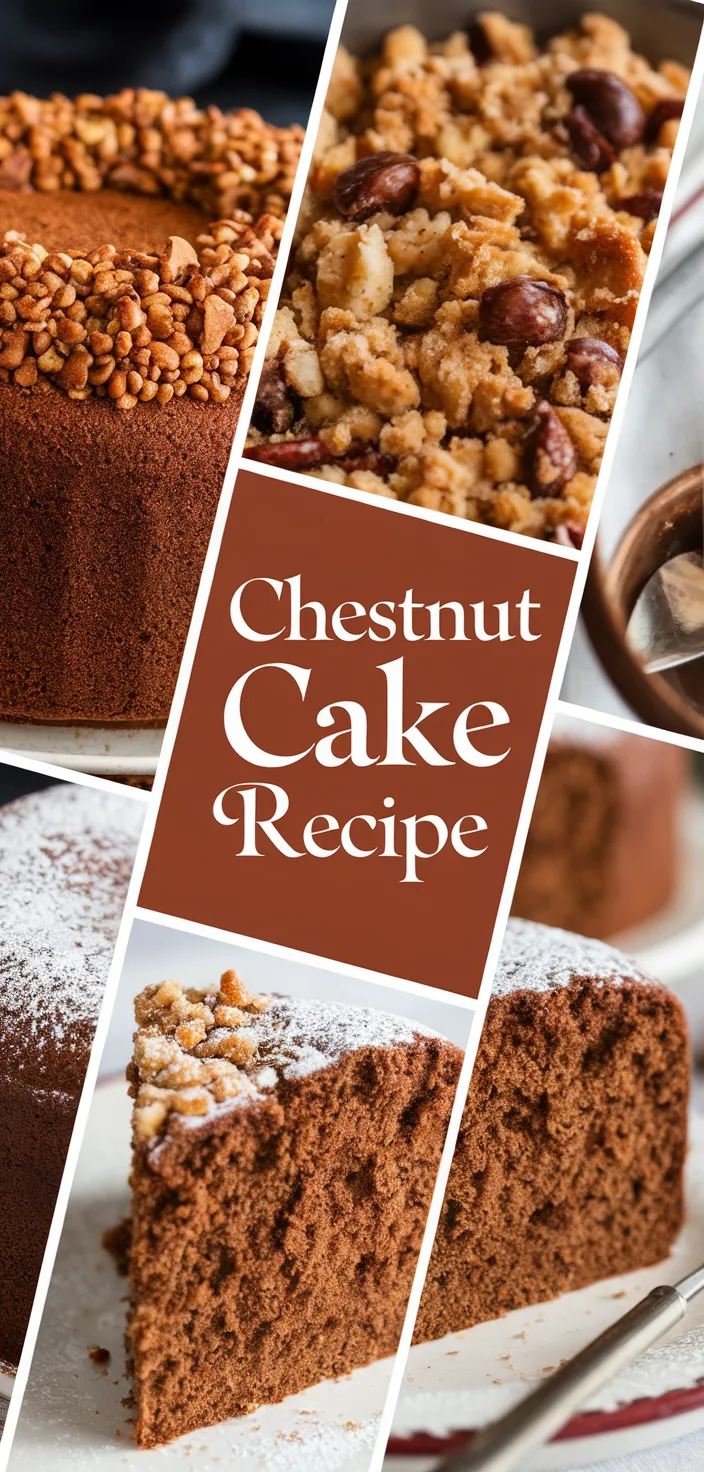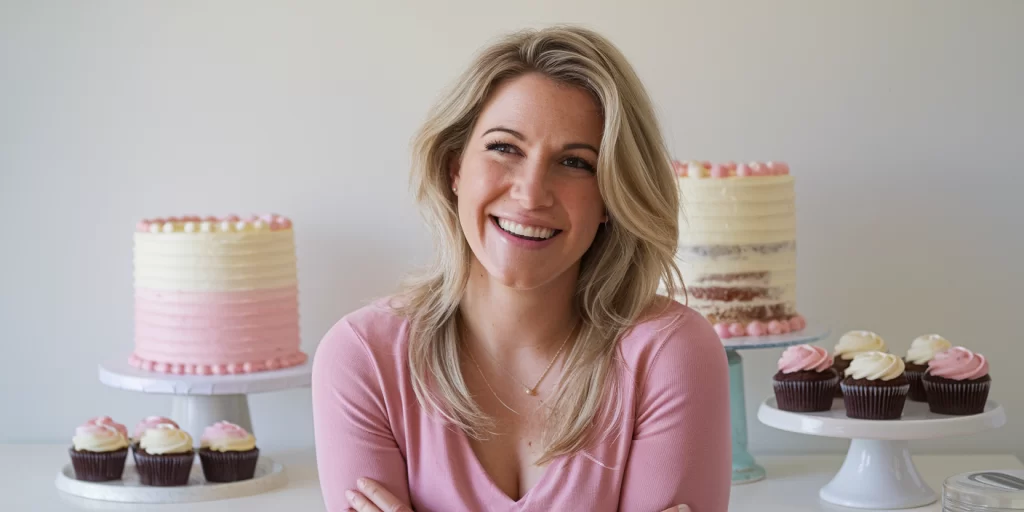A cake made with chestnuts has a certain comfort to it, and I adore the deep and nutty flavors they bring to my Chestnut Cake. A key component in this recipe is chestnut puree, which offers a texture akin to chocolate but with a lovely, earthy sweetness.
Pairing that with unsalted butter and a cup of granulated sugar ensures the cake is tender and sweet enough to pass as a classic dessert while still being unique. I prefer to divide the eggs because it allows a sublime lightness to the cake.
I whip the egg whites separately and fold them in, balancing the cake’s density. The yolks go in right after the vanilla extract.
The cake’s flavor balance is wonderful this way. Structure comes from good old all-purpose flour, baking powder, and a touch of salt.
Everybody puts salt in their cake recipes for a reason. It makes everything taste more…
you know, tasty. Milk folds in the cake, keeping it moist.
A final dusting of powdered sugar finishes the presentation and adds a delicate sweetness to the overall experience. Although chestnuts contain fat, when compared with other nuts, they’re not nearly as rich.
They’re also low in calories, making this cake a relatively healthful way to enjoy them. And taste?
Chestnuts give this cake a lovely texture and a warm flavor that can only be described as nutty.

Ingredients

Chestnut puree: Creamy and rich, it adds an earthy-nut flavor; provides fiber, protein, and vitamins.
Butter, unsalted: Supplies moisture and brings richness, which are the components needed for a tender crumb.
Sugar that is in granule form: Provides sweetness to the cake; assists in obtaining a golden finish through caramelization.
Eggs serve several purposes.
They bind the ingredients together, which is crucial.
They also add some moisture.
They help with the rising.
Instant Pot Corned Beef and Cabbage.
All-purpose flour: Provides the structure of the cake, being absolutely necessary for texture and stability.
Ingredient Quantities
- 1 cup chestnut puree
- 1/2 cup unsalted butter, softened
- 1 cup granulated sugar
- 4 large eggs, separated
- 1 teaspoon vanilla extract
- 1 cup all-purpose flour
- 1 teaspoon baking powder
- 1/4 teaspoon salt
- 1/2 cup milk
- 1 tablespoon powdered sugar for dusting
Instructions
1. Warm your convection oven to a temperature of 350°F (175°C). Grease a soufflé dish that is approximately 9 inches (23 cm) in diameter.
2. In a large mixing bowl, beat together the softened butter and granulated sugar until light and fluffy.
3. In the butter mixture, add the chestnut puree and vanilla extract, mixing until you achieve a good combination.
4. In another bowl, beat the egg yolks and add them to the chestnut mixture, stirring until completely combined.
5. The all-purpose flour, the baking powder, and salt. The dry ingredients to the chestnut mixture. The alternation goes like this: dry, wet, dry, wet, dry, end with wet. The wet is milk. Mix until just combined.
6. In a different clean bowl, beat the egg whites until they form stiff peaks.
7. Carefully combine the beaten egg whites with the chestnut batter, being careful not to deflate the mixture.
8. The prepared cake pan is filled with batter, which is smoothed on top with a spatula.
9. Preheat the oven until hot. Place the batter in a pan and slide into the oven. Bake for 35 to 40 minutes; then check for doneness by inserting a toothpick into the center part of the bake. A clean toothpick means it’s done.
10. Let the cake cool in the pan for 10 minutes. Then turn it out onto a wire rack to cool completely. Dust with powdered sugar before serving.
Equipment Needed
1. Convection oven
2. Soufflé dish (9 inches in diameter)
3. Mixing bowls (at least 3)
4. Hand mixer or stand mixer
5. Spatula
6. Measuring cups
7. Measuring spoons
8. Toothpick
9. Wire rack
FAQ
- Q: Can I use canned chestnut puree?
A: Yes, canned chestnut puree works well for this recipe. Ensure it is unsweetened for the best flavor balance. - Q: Do I need to use an electric mixer?
A: While an electric mixer makes it easier to beat the butter and sugar, you can also use a whisk or a wooden spoon with some extra effort. - Q: Can I substitute almond flour for all-purpose flour?
A: Almond flour can be used, but it will change the texture of the cake, making it denser. Adjust baking time as necessary. - Q: How do I store the chestnut cake?
A: Store any leftovers in an airtight container at room temperature for up to 3 days, or refrigerate for up to a week. - Q: Is it necessary to separate the eggs?
A: Yes, separating the eggs and beating the whites before folding them in helps to give the cake a lighter texture. - Q: Can I add other flavorings?
A: Absolutely! Add a teaspoon of rum or almond extract for a different taste profile. - Q: What type of milk should be used?
A: Whole milk is preferred for a richer flavor, but you can use any type of milk according to your dietary preference.
Substitutions and Variations
Chestnut puree: Use 1 cup of pumpkin puree instead for a different flavor profile.
Butter without salt: For a dairy-free alternative, use 1/2 cup of coconut oil.
Granulated sugar: Substitute with 1 cup of coconut sugar for a deeper flavor.
To replace eggs with a vegan alternative in a recipe, use 1/4 cup of unsweetened applesauce for each egg called for in the recipe.
All-purpose flour: For a gluten-free option, substitute with 1 cup of almond flour.










